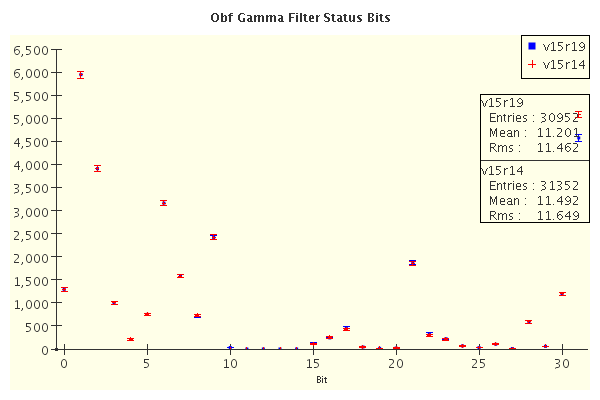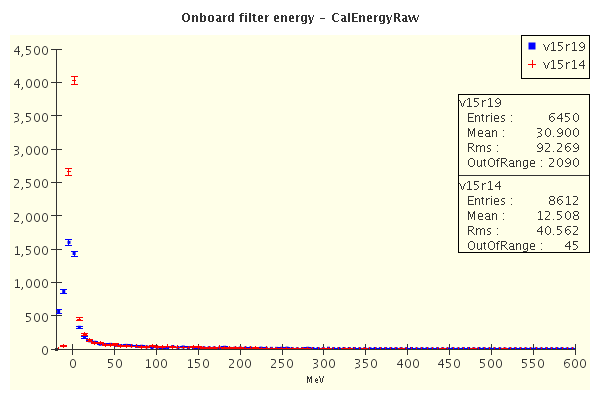System Tests Report Summary
GR v15r19 is most of the ramp up to a new candidate L1 production.
The only histograms showing differences for a comparison to GR v15r14 are for filter energy and status. These are expected for software changes made in this release.
Changes
- GCRCalib - init status word and update for obf 1-0-8
- OnboardFilter, IExternal/obf - enable use of flight calibrations
- astro - possible (but unsuccessful) fix calculation of celestial coordinates giving NaN values for pointed observation mode.
- ldfReader - GRINF-48
- Gleam - basic options now leak all events for MC
Special Job Options for system tests of GR v15r19
GR v15r19 did not contain several job options in the basic job options that should be used for this release (they will be added to the basic options for GR v15r20). The system tests were run with the following options in addition to the standard system test job options and the basic options.
ToolSvc.FSWAuxLibsTool.FileNamePeds="cal_db_pedestals";
ToolSvc.FSWAuxLibsTool.FileNameGains="cal_db_gains";
These are necessary to better match the Gleam version of the filter to the flight software version.
Onboard filter
The consequence of the onboard filter changes is that the filter energy and the gamma filter status and states have moved around a little - less vetos and more events passing.
Here are the gamma filter gamma status bits (ObfGamStatus from merit) for the AllGamma test. Note the drop in bit 31 (any veto)
Here is the onboard filter energy (ObfGamEnergy from merit) with CalEnergyRaw subtracted. This is now more negative indicating smaller ObfGamEnergy values than in previous GR's. This is due to the use of the flight software calibrations in the Gleam version of the filter. No comparison with that here since this is not real data.
Here is the same plot, for the BackGndMixDC2 system test.
You can see in both of these that the peak in the newer release is broader and many events events are now out of range, on the low end. The broadening seems reasonable assuming the flight software calibrations must have more of a spread than the "ideal" calibrations used in the system tests.


